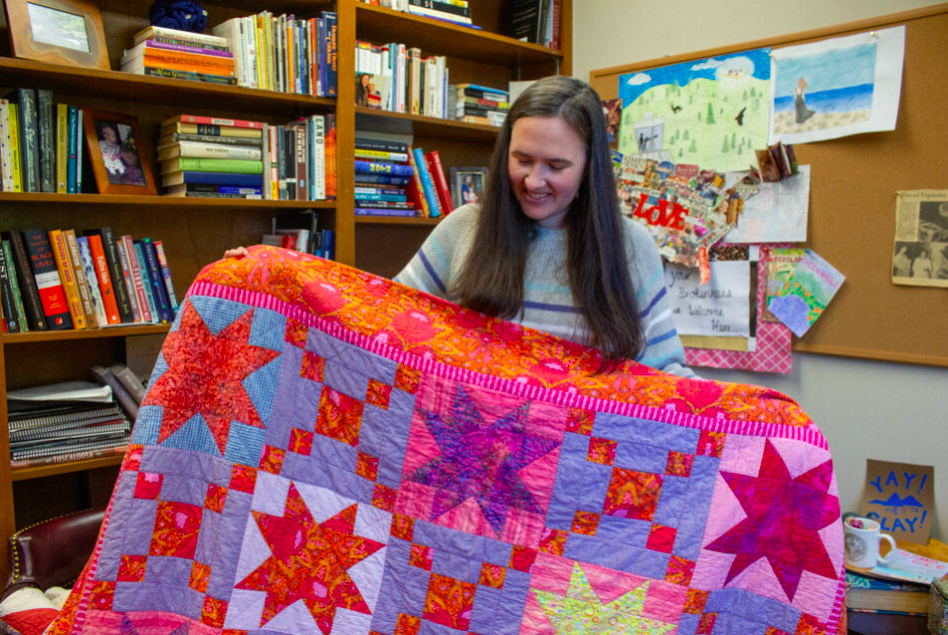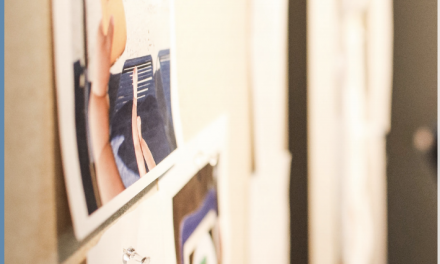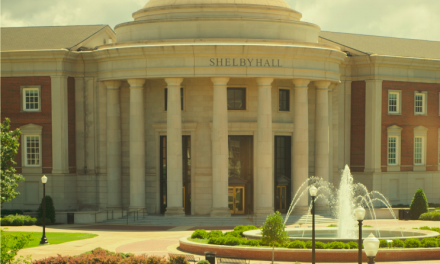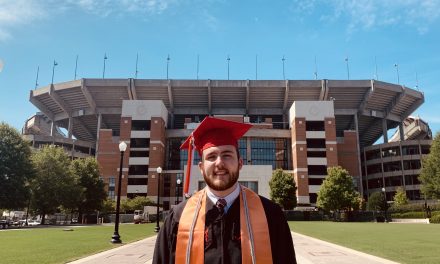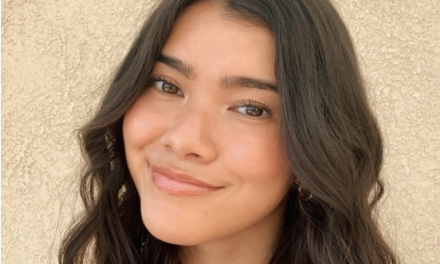Despite its origins in times long passed, tradition is just as alive as we are. Each of us is the culmination of passed down stories, adopted idiosyncrasies and inherited passions sewn into one being. Rather than letting it fade, Dr. Anne Franklin Lamar seeks to usher the vibrant forces of a generational tradition into a new age.
Lamar, Assistant Professor and Director of Honors Year One, finds inspiration – and even empowerment – in a custom of her maternal lineage: quilting.
Though for many traditions are occasional, Lamar was raised by hers, living a childhood immersed in the passion of her maternal lineage. Originating from her love of designing smocking and children’s patterns, Lamar’s mother, a UA alumnus, opened a local storefront which would expand from a seller of children’s hand-sewing supplies to a local quilt-making hub for all ages. A kindergartener upon the store’s opening, Lamar was one of its most frequent visitors, building many of her foundational memories behind the counter.
“My siblings are a good bit older, so if I didn’t have after school stuff, a lot of times after school I ended up at the store. And the person who owned the store with my mom – they had owned the children’s pattern business together before – she had a daughter who is closer in age to me, but we spent so much time up there,” Lamar said. “We choreographed dances in the back, you know, everything that little kids do growing up.”
A childhood friendship was not the only relationship to blossom at the store as it became a center of conversation and collaboration, offering a range of classes from smocking, a type of embroidery often seen on children’s clothing, to beginner’s quilting. Though most worked on projects of their own, they served as conversation pieces since they were often sewn for a loved one’s wedding or baby shower, establishing a commonplace between a variety of quilters through their creative passions and those they used them for.
“The store was an interesting place to see those relationships happen, because I grew up in the Mississippi Delta, and it can be a very segregated place, but the cross section of people who sew is pretty broad so you could see groups of people come together,” Lamar said, “and especially women who wouldn’t normally cross paths in a social setting, even really a school setting in Greenville, be able to meet in that space to build that community.”
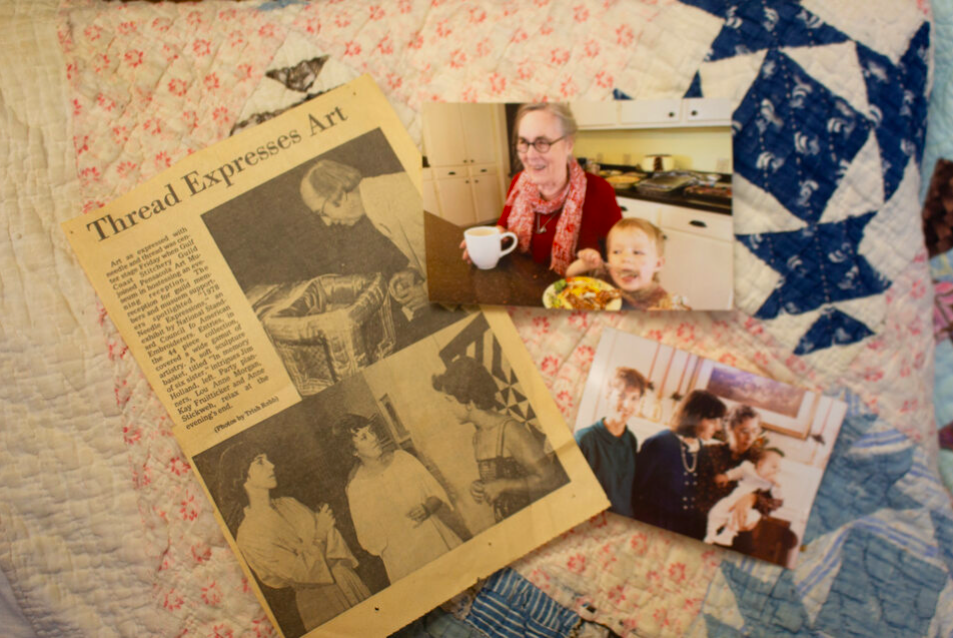
Even after Lamar’s routine days at the storefront came to a close, quilts followed her to new endeavors as her mother sewed gifts to accompany her into new beginnings, including matching quilts for her and her roommates as she started her undergraduate degree, one to celebrate the start of graduate school and one to reside in her first house. While Lamar says these hold the most sentimental value, quilts made by others also hold memories of her upbringing.
“We also took quilts, really old quilts that my mother may not even have met the people who helped make them; we would use those types of quilts for picnics or when we went on a school field trip, they always came with us, so they were always around,” Lamar said.
More of her most prized quilts carry not only the memories of her own life, but those of generations before her. Though they never had the chance to meet, Lamar feels a deeper connection to her namesake through her handmade heirlooms.
“I’m named for my mom’s grandmother who was also a quilter, and we still have between us some of the quilts that Anne Franklin and the women in her family quilted, so those are right up next to the ones that mom has made me through the years,” Lamar said.
Lamar adopted the tradition over the years as she collaborated with her mother on quilts and even made a few independently – the first being a jar quilt she constructed in middle school of novelty fabrics patterned with “anything you’d find in a Mason jar,” such as bugs, frogs and fireflies. She also pursued her passion for helping with her mother’s store through the time she was in graduate school, when she transitioned into a new stage of her life and helped to close one in the store.
“When my mom closed the store that was the hardest thing, maybe not the loss of community because they still have a quilt guild and things like that, but having that common meeting place and being able to check in on whose daughter has had a baby and that kind of stuff,” Lamar said. “It’s really a place where you find belonging, but you’re also connecting to people that you may not meet at church or other social settings, so it’s really interesting how it can bring different groups of women together.”
Quilting’s impact on Lamar’s life is not confined to the walls of her childhood, however, as she dedicates part of her professional career to examining its effect. She brought her love of the tradition to Tuscaloosa by teaching a class that examines the stories behind non-traditional texts, including quilts, cookbooks and gardens.
With Alabama’s rich history in quilt making, Lamar teaches the stories of the Gee’s Bend quilters, a quilting guild established in 1816 by the enslaved women of Joseph Gee’s cotton plantation in the southeast. Later generations would become sharecroppers, fostering their predecessors’ practice of quilting throughout the 20th century, with many of the women becoming active in the Civil Rights movement in the 1960s, and still quilting today. Studying their variety of vibrant, individualistic designs, Lamar pairs the context and the artwork to discover what their female creators communicate.
“I do think that you can look at the oral histories from these cultures in West Texas and the Gee’s Bend cultures and see how it was empowering for some of them, even as it was a necessity, because it gave them that community and creative outlet,” Lamar said.
These women, along with those of Lamar’s personal life, have inspired her to find a creative outlet of her own. With the artist statement that “clay is her fabric,” Lamar first learned her craft at her church’s pottery in middle and high school, leaving the hobby behind until graduate school, when she had the opportunity to work and teach classes at a conference center over the summer. Recently throwing the wheel at the Kentuck Arts Festival, she continues this passion today, taking inspiration from stories of quilters, especially those of West Texas, in her pottery.
“I’m a potter, and I do a lot of carving pots, and I do quilt motifs. I have mugs that I call ‘quilt mugs,’ but I also started doing what I call ‘affirmation mugs’ that I pulled general affirmations for,” Lamar said. “But I was teaching this [book on West Texas] one semester, and they are talking to a woman who is telling her mother’s story through the quilt, and it’s when they are living in a dugout, still quilting for warmth, but also for beauty and this scarcity of life, but I carved the affirmation on the front of one of the mugs.”
Artistic inspiration is not the only thing Lamar draws from her time observing the women of West Texas, Gee’s Bend and her mother’s store; she has also found that the foundation of community transfers to her own craft.
“I’m in a co-op here, and the same things that we talked about in that co-op when we’re working on things are the same things you’d hear women talking about in a quilting bee or quilting guild,” Lamar said. “You bring a cross section of people together – a lot of retired folks, UA professors. I would say most of the people in the clay co-op I would have never met; maybe a few of them I would have crossed paths university-wise or church-wise.”
Though the practice of quilting is not as prevalent today, it remains a prominent force in her life as it powers her artistic endeavors and sense of community. While this can be seen as empowering in Lamar’s life, the question is raised whether the historically female-attributed practice of quilting itself can be viewed as empowering to women, especially as it, along with handiwork in general, was often an obligation.
“Because of that switch from what happens when it’s not a necessity or requirement, you can very clearly see when it was that how it could be both an outlet for creativity but also an expectation and therefore something that was just like having to cook for your family every night,” Lamar said. “That unpaid labor is really taxing on women, so you can see where it could not be a positive thing or something that’s empowering.”
Despite these pressures, freedom could also be found in quilting as women used it as a vehicle for expression. Furthermore, women have reclaimed freedom in this practice as they have made it a choice rather that an expectation, and in our modern age, made it an art form inclusive of everyone.
“I think there are a lot of ways that quilts have been used in activist spaces in that kind of reclaiming of an often gendered practice to be protest quilts or to be empowering in different ways,” Lamar said. “You know, I have a good friend who lives in Greensboro and he’s a wonderful quilter. It’s like we’ve expanded the idea of who can quilt.”
This changing landscape was reflected in the October issue of The New York Times which stated that “…more recently, A$AP Rocky wore a quilted blanket to the Met Gala, and the fashion designer Emily Bode has outfitted Harry Styles and Bad Bunny in quilted garments.”
As the fabrics of quilting are stitched into a modern context, Lamar sews it into her own future, and that of her students, by encouraging everyone to discover the power that lies in creation, whether that means continuing a tradition or beginning a new one.
“Just like I’m talking about clay being the medium which I choose, I think it’s worth thinking about no matter what you’re doing, you’re doing it for sheer creation or building community – having something to be passionate about that is not connected to work in a direct way,” Lamar said. “I know I’m saying that and I’m talking about a class that I teach, but that kind of practice of something I think is so important no matter what it is, and it’s empowering to have your identity land in something that you’re making or engaging in.”

